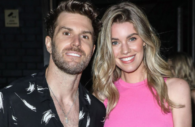
How to – scientifically – get more likes on Instagram
We all know the stress of convincing yourself that a selfie is acceptable to put on social media… then freaking out when it doesn't get a single response in the first 15 seconds.
Having said that, there are few feelings in the world as satisfying as receiving that coveted 11th seal-of-approval on Instagram – a milestone which automatically swaps your likes from names to numbers. Yup… 'tis the little things.

Although some people choose to use #NoFilter (we know it's all lies anyway) there is now proper scientific research to prove that adding effects will only improve your online reputation. Hurrah!
Yes, while it might seem that you need a seriously lavish lifestyle to garner attention, it turns out that your chosen filter has a lot more to do with it than you might think.

In a study conducted by Yahoo labs and Georgia Tech, it has been discovered that adding the likes of a Mayfair, Hudson, Lo-Fi, or indeed the coveted Valencia, to your photo means more people are more likely to engage with it.
Indeed, they found that shots with filters are 21 percent more likely to be viewed, and 45 percent more likely to be commented on.

The study even discovered that different types of filters can have a greater or lesser impact (for your own records: the experts advise choosing one that increases contrast, corrects exposure problems, and creates a "warmer" colour).
So fear like-less selfies no more; this is surely a fool-proof way to direct people towards your social-media selves – science always knows what it's talking about after all.













